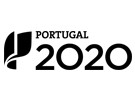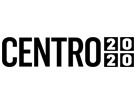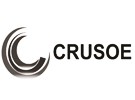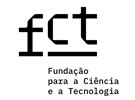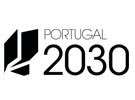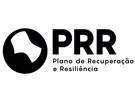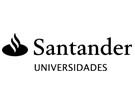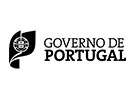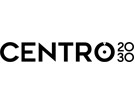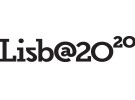



Publication in the Diário da República: Despacho nº 7904/2013 - 18/06/2013
8 ECTS; 1º Ano, 1º Semestre, 60,0 TP + 4,0 OT + 4,0 O , Cód. 308129.
Lecturer
- Pedro Alexandre Santos de Matos (1)(2)
(1) Docente Responsável
(2) Docente que lecciona
Prerequisites
Not applicable
Objectives
- Gain a perspective on the formal evolution of books throughout the modern era, with an emphasis on the contemporary period.
- Understand the importance of books in the context of our society and its cultural evolution.
- Distinguish the main types of books, regarding their different categories, purposes, and general editorial and formal characteristics.
- Know the parts that make up the different types of books, their names, and different functions.
- Define the various physical characteristics of the book, adapting them to the type of edition and book.
- Understand the fundamental characteristics of imposition and their implications on the dimensions of the book-format and total number of pages.
- Design layout grids appropriate to the book's typology, format, and content.
- Develop the sensitivity and technical knowledge to compose body text and other textual elements in a functional and/or expressive manner.
- Develop the sensitivity and technical knowledge to page layout, establishing a good relation between the different graphic contents, encouraging good navigation, consultation and reading.
- Develop sensitivity to the limitations and special needs of different readers, developing graphic solutions that allow for inclusion.
- Understand the context of book production, designing physical and graphic solutions that are environmentally and economically sustainable.
Program
1. Historical context of books
Writing and reading, books and the press
2. Book anatomy
Book parts and their functions
Nomenclatures
3. Book typologies
diversity and specificities: technical, scientific, children's book, novel, poetry, album, ...
Different editions, issues, collections
4. Physical characteristics of books
The importance of materials, types of binding and other finishes
Covers, dust jackets, endpapers, block, cases
5. Formats and layout grids
Basic principles of imposition and size definition
Relation between content, formats and grids
Grid definition rules
Page architecture: type area, runnig head, page numbering, notes
6. Text setting
Typefaces for body copy and other textual elements
Relation between column width, body and leading
7. Layout and text-image relation
Layout styles
Relation between content, layout and reading
8. Visual elements of inclusion
Types of readers, characteristics and special needs
Elements to aid reading, comprehension and navigation
9. Book and sustainability
Environmental and economic aspects in design and production
Evaluation Methodology
A. PARTICIPATION
Debate, autonomy, initiative, meeting deadlines and demonstrated commitment, inside and outside the classroom. WEIGHTING: 15%
B. PRACTICAL WORK
Planning, organization, working method and good technical execution considering: creativity and suitability to work proposals; experimentation and consequent exploration of techniques, tools and work processes; good completion and presentation, digital and physical, of works; degree of complexity of the presented solutions. TOTAL WEIGHTING: 75%
The evaluation of practical work considers regular monitoring in class, following the planning provided in the first class.
The 3 practical works have the following partial weightings:
1. Modern Book reaserch: 15%
2. Book design and layout: 45%
3. Old Book reaserch: 15%
C. DESCRIPTIVE AND JUSTIFICATION REPORT
The book design and layout work is accompanied by a report that describes and justifies the work process and its planning, basic concept and ideas, and forms of implementation. WEIGHTING: 10%
EXAM EXEMPTION
Cumulative compliance with:
Minimum presence in 2/3 of classes.
Carrying out all work and the final report.
Rating equal to or greater than 10 points.
EXAM
Completion and delivery of missing work and/or improvement of undelivered work.
Bibliography
- Binns, B. (1989). Better Type. New York: Roundtable Press Book
- Birdsall, D. (2004). Notes on Book Design. New Haven & London: Yale University Press
- Bringhurst , R. (2013). The Elements of Typographic Style. Vancouver : Hartley & Marks
- Faria, M. e Pericão, M. (2008). Dicionário do Livro. Coimbra: Edições Almedina
- Haslam, A. (2007). O Livro e o Designer II. Como Criar e Produzir Livros. São Paulo: Edições Rosari
- Hendel, R. (2013). Aspects of Contemporary Book Design. Iowa City: University Iowa Press
- Hochuli, J. e Kinross , R. (1996). Designing Books. Practice and Theory. London: Hyphen Press
- Houston, K. (2016). The Book. A cover-to-cover exploration of the most powerful object of our time. New York: W. W. Norton & Company
- Manguel, A. (2020). Uma História da Leitura. Lisboa: Tinta-da-China
- Müller-Brockmann, J. (1982). Sistemas de retículas. Barcelona: Gustavo Gili
Teaching Method
Situated in a professional academic context, the work will be carried out using a typical exercise of the profession, supported by theoretical-practical classes. We will seek to encourage experimentation and trial-error in individualized monitoring.
Software used in class
Adobe InDesign, Photoshop, Illustrator.
